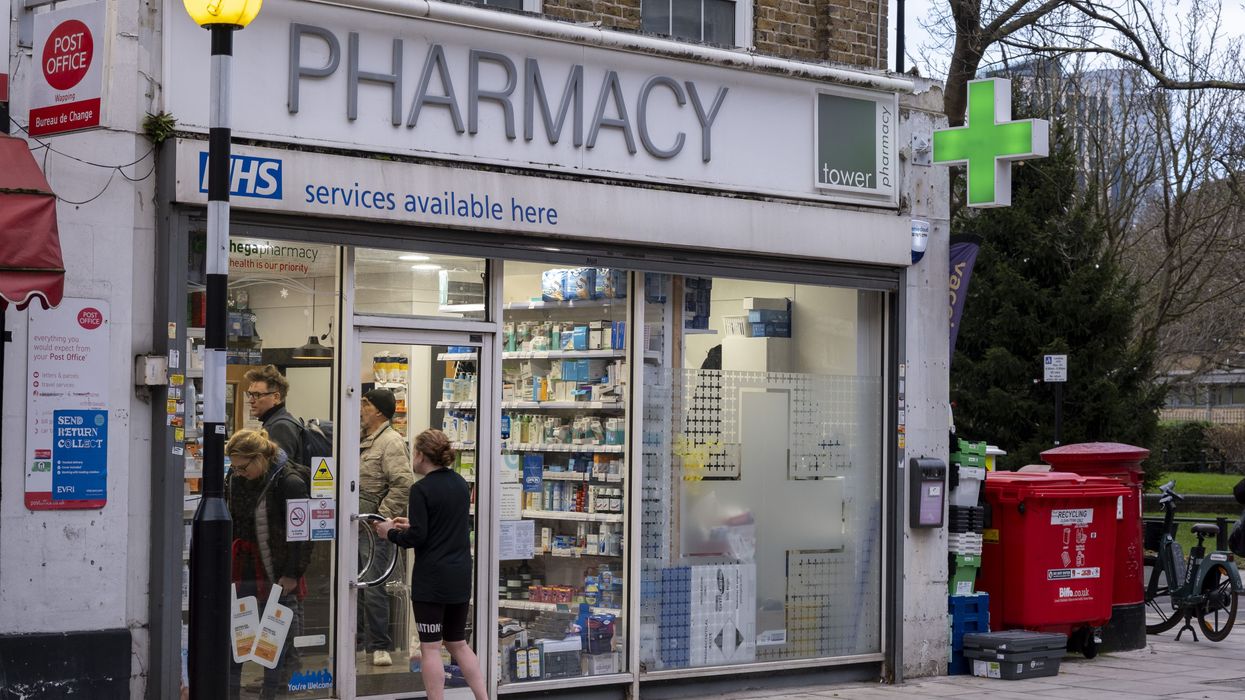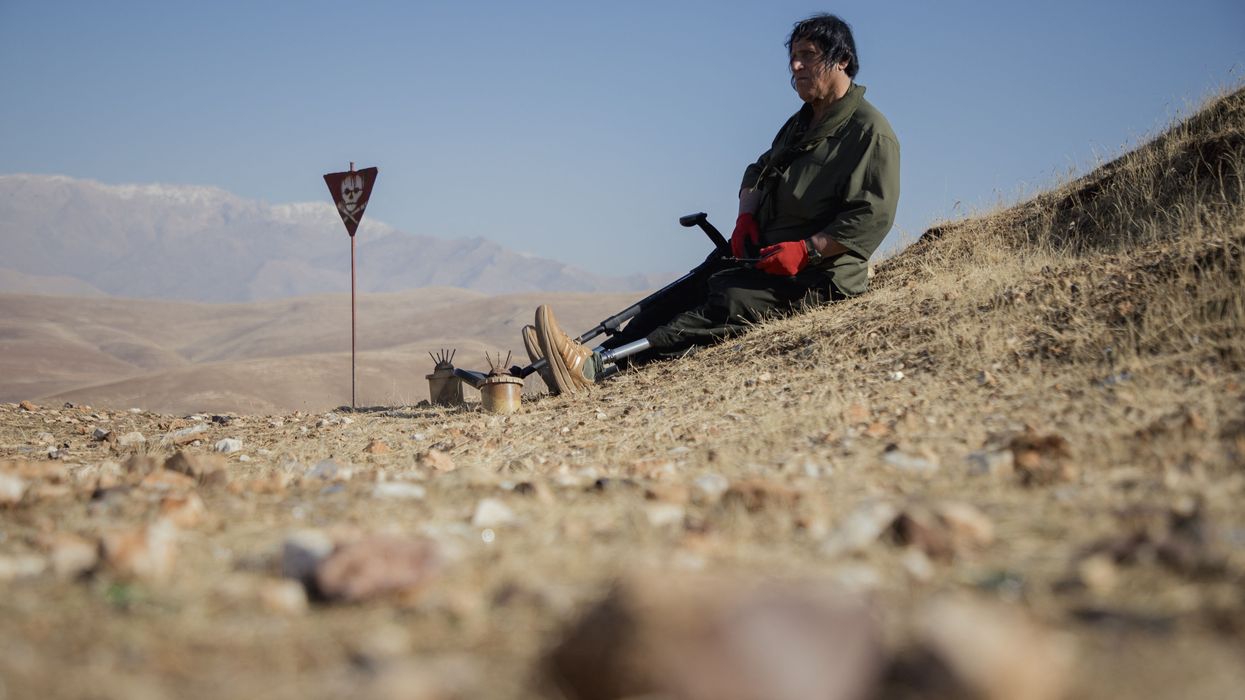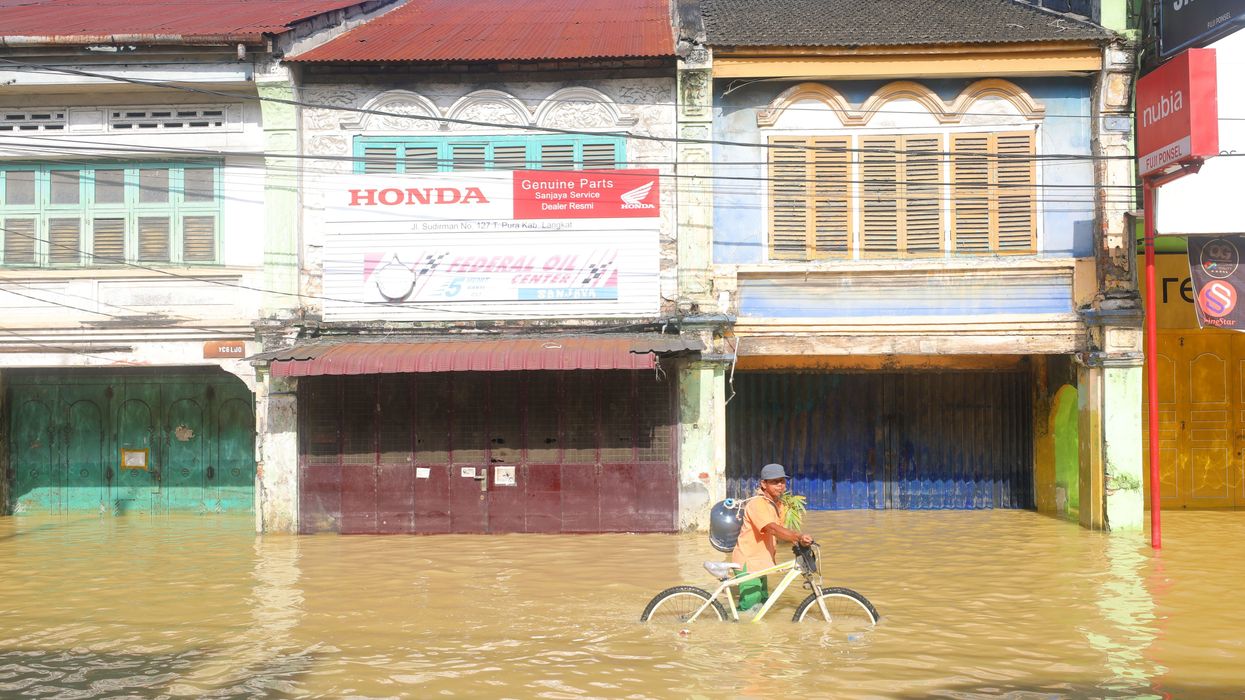December, 14 2015, 02:00pm EDT

White House in the Spotlight as Controversial CISA-Like Cyber Spying Added to 'Omnibus' Must-Pass Budget Bill
President Obama must veto dangerous attack on Internet security and free speech
WASHINGTON
Media reports and sources close to legislative negotiations indicate that the final version of controversial cyber surveillance bill CISA--which has been gutted of its already weak privacy protections--has been added to the "omnibus" must-pass budget bill that Congress is expected to take up this coming week in order to avoid a government shutdown.
Fight for the Future has launched an online action page ObamaDecides.org calling for President Obama to veto CISA in any form. The action tool allows concerned citizens to sign up to be "daily callers," who will receive a phone prompt to call the White House every day until the administration issues a veto threat.
"Now is when we'll find out whether President Obama really cares about the Internet and freedom of speech, or whether he's happy to roll over and allow technologically illiterate members of Congress break the Internet in the name of cybersecurity," said Evan Greer, campaign director of Fight for the Future, a leading digital rights group that has organized fierce grassroots resistance to CISA and similar bills, "This administration promised to veto any information sharing bill that did not adequately protect Internet users' privacy, and the final version of this bill doesn't even come close. It's time for President Obama to deliver on his word."
Fight for the Future has been at the forefront of grassroots opposition to CISA, and its previous incarnation, CISPA. Earlier this year they lead a series of high profile campaigns, sparking a backlash that resulted in major tech companies like Apple, Google, Twitter, Dropbox, Yahoo, Wikipedia, Yelp, and Salesforce coming out in opposition to the bill. They have also mobilized more than 15,000 websites for an online protest, and generated more than 6 million faxes to the Senate, along with hundreds of thousands of emails and phone calls.
Fight for the Future is a group of artists, engineers, activists, and technologists who have been behind the largest online protests in human history, channeling Internet outrage into political power to win public interest victories previously thought to be impossible. We fight for a future where technology liberates -- not oppresses -- us.
(508) 368-3026LATEST NEWS
'We Are Being Held to Ransom': Trump-Starmer Deal Would Force NHS to Pay More for Medicines
One British lawmaker condemned the agreement as "a Trump shakedown of the NHS."
Dec 01, 2025
The government of British Prime Minister Keir Starmer faced swift backlash on Monday after the Trump administration announced a deal under which the United Kingdom's prized National Health Service would pay higher prices for new medicines in exchange for tariff exemptions.
The agreement in principle, outlined in a statement by the Office of the United States Trade Representative, was seen by UK lawmakers and advocacy groups as a gross capitulation to US President Donald Trump and the pharmaceutical industry that would harm the NHS and British patients for years to come.
"Giving in to Big Pharma’s demands to hike the price of medicines spells disaster for our NHS, and for the lives of ordinary people," said Global Justice Now, a UK-based group. "We are being held to ransom. Our government must stand up to Big Pharma and for our NHS by reversing course."
Under the three-year deal, the NHS would boost the net price it pays for new pharmaceutical drugs, many of which emerge from the US, by 25%—a change that's expected to cost British taxpayers roughly £3 billion. In return, Trump has agreed not to impose tariffs on UK pharmaceuticals.
Helen Morgan, the Liberal Democrat MP for North Shropshire, denounced the new agreement as "a Trump shakedown of the NHS." As evidence, she pointed to US Health and Human Services Secretary Robert F. Kennedy Jr.'s celebration of the bilateral deal.
"It cannot go ahead," said Morgan. "RFK Jr. has put it in black and white: Trump demanded these pay rises to put Americans first, and our government rolled over. Patients stuck on crammed hospital corridors, or unable to get an ambulance, won’t forget it."
"The British people didn’t vote for this," Morgan added. "The government must put this agreement to a vote in parliament.”
Andrew Hill, a visiting health economics researcher at the University of Liverpool, similarly criticized the deal.
“The UK hasn’t benefited from this at all, but we’re having to pay all this extra money," said Hill. "More money spent on drugs means less money spent on ambulances, doctors, nurses, simple health interventions."
In addition to facing the threat of Trump tariffs, the UK government was under pressure from the powerful pharmaceutical industry to jack up NHS drug spending. The Guardian reported in September that "big pharmaceutical companies have ditched or paused nearly £2 billion in planned UK investments so far this year" as the firms "accused the government of not spending enough on new medicines."
Survey data released just ahead of Monday's deal announcement shows that 64% of the British public is opposed to the NHS paying higher prices for medicines.
"This is a betrayal of NHS patients," said Diarmaid McDonald, executive director of the advocacy group Just Treatment. "Big Pharma have got what they want. Donald Trump has got what he wants. In the face of their coordinated threats, the government has folded and thousands of patients will pay for this with their lives, as precious funds get stripped from other parts of the health service to line the pockets of rich pharmaceutical execs."
"MPs need to urgently hold the government to account," McDonald added, "and demand they publish the evidence showing the impact of this catastrophic move.”
"This outrageous giveaway to Big Pharma does nothing to lower prices in the United States. It only hurts UK patients."
Asked at a Monday press briefing if the deal would actually benefit US patients and consumers, as the Trump administration has claimed, or if the alleged revenue generated by the agreement would just be "sucked up" by the drug companies, White House Press Secretary Karoline Leavitt did not have an immediate answer.
"I'm going to be honest with you, Ed," Leavitt told the reporter: "I'll get you an answer to that question after the briefing."
Peter Maybarduk, Public Citizen’s Access to Medicines director, argued in a statement that the agreement wouldn't help Americans or Britons.
" Drug prices are far too high everywhere, including in the UK, backed by patent monopolies and contributing to rationing and preventable suffering," said Maybarduk. "This outrageous giveaway to Big Pharma does nothing to lower prices in the United States. It only hurts UK patients while distracting from the serious action needed at home to hold Pharma accountable and make medicine affordable and available for all.”
Keep ReadingShow Less
'Truly Barbaric': Number of People Killed or Maimed by Landmines Hits Five-Year High
"Even when fighting stops, these hidden killers remain active for decades, continuing to destroy lives long after the combat has stopped," said one campaigner.
Dec 01, 2025
The 27th annual Landmine Monitor report revealed on Monday that antipersonnel landmines and other explosive remnants of war killed at least 1,945 people and injured another 4,325 in 2024—the highest yearly casualty figure since 2020 and a 9% increase from the previous year.
Since the Mine Ban Treaty entered into force in 1999, "casualty records have included 165,724 people recorded as killed (47,904) or injured (113,595) or of unknown survival outcome (4,225)," according to the new report from the Nobel Peace Prize-winning International Campaign to Ban Landmines (ICBL).
The ICBL published the report as state parties to the treaty kicked off a meeting in Geneva, Switzerland. It details not only casualties but also treaty updates; production, transfers, and stockpiles of mines; alleged or confirmed uses; existing contamination; and international efforts to aid victims and clean up impacted regions.
Also known as the Ottawa Treaty, it is now supported by 166 countries, after the Marshall Islands ratified the pact in March and Tonga acceded in June. Despite that progress, there have also been steps backward, as Mark Hiznay, Landmine Monitor editor for ban policy, highlighted in a Monday statement.
"Five states renounced their treaty obligations in a matter of months," Hiznay said, "when evidence shows if they use mines, it can take decades and enormous resources to clear contaminated land and assist the new victims, who will feel the impact of mine use long after the conflict has ceased."
The state parties in the process of legally withdrawing are Estonia, Finland, Latvia, Lithuania, and Poland. ICBL director Tamar Gabelnick argued Monday that "governments must speak out to uphold the treaty, prevent further departures, reinforce its provisions globally, and ensure no more countries use, produce, or acquire antipersonnel mines."
"Turning back is not an option; we have come too far, and the human cost is simply too high," Gabelnick warned.
The 2025 Landmine Monitor is out now.Casualties from landmines and unexploded bombs have risen. On average, 17 people were killed or injured every day in 2024, nearly half of them children.As states meet for the Mine Ban Treaty this week, MAG urges renewed commitment.More ➡️ buff.ly/CP8m0BL
[image or embed]
— MAG (Mines Advisory Group) (@minesadvisorygroup.bsky.social) December 1, 2025 at 5:35 AM
There have been recent reports of mine use by both state parties to the pact and countries that have refused to embrace the treaty. The publication notes alleged use by government forces in Myanmar; by Iran, along its borders with Afghanistan and Pakistan; and by North Korea, along its borders with China and South Korea. Additionally, in July, Thailand accused a fellow state party, Cambodia, of using mines along their disputed border. Cambodia has denied the allegations.
Another state party, Ukraine, is trying to unlawfully "suspend the operation" of the treaty while battling a Russian invasion, and the report points to "increasing indications" of mine use by Ukrainian forces in 2024-25. Russia—one of the few dozen nations that have not signed on to the agreement—has used mines "extensively" since invading its neighbor in February 2022.
The United States has also never formally joined the treaty and has come under fire for recent decisions. After initially aiming to accede to the treaty, the outgoing Biden administration last year approved a plan to provide antipersonnel landmines to Ukraine. This year, the Trump administration has made deep cuts to foreign aid that have disrupted mine clearance operations.
The global ban on antipersonnel landmines saves civilian lives but faces serious threats from countries leaving the treaty and new landmine use.Immediate and strong action is needed to counter these life-threatening developments.New Landmine Monitor 2025, out now⤵️
[image or embed]
— Jan Kooy (@kooyjan.bsky.social) December 1, 2025 at 5:14 AM
"Even when fighting stops, these hidden killers remain active for decades, continuing to destroy lives long after the combat has stopped," Anne Héry, advocacy director at the group Humanity & Inclusion US, said in a Monday statement. "States parties must live up to their obligations under the Mine Ban Treaty: to condemn, in the strongest possible terms, any use of antipersonnel mines by any actor, under any circumstance."
"A large part of the victims recorded in the Landmine Monitor 2025, like in the previous years, are injured or killed by landmines and explosive remnants long after the fighting has ended, when people return to their homes believing they can start a new life," she continued. "Landmines are truly barbaric weapons that kill and injure largely outside periods of active conflict."
On Wednesday, Humanity & Inclusion US executive director Hannah Guedenet will join fellow experts for a virtual briefing "to discuss the latest Monitor reports, the human cost of these weapons, and the role US leadership must play at this pivotal moment," the group leader previewed in a Monday opinion piece for Common Dreams.
"Bringing these insights directly to policymakers and advocates is essential to strengthening global norms and advancing effective solutions," she wrote. Despite never joining the Mine Ban Treaty or the 2010 Convention on Cluster Munitions, "the United States has long been one of the world's largest supporters of mine clearance and victim assistance, helping make former battlefields safe for farming, economic investment, and community life."
"The case for action is both moral and pragmatic. Every mine removed or cluster bomb destroyed reopens land for cultivation, enables displaced families to return home, and prevents future casualties. These are tangible, measurable outcomes that support US foreign policy priorities: stability, economic recovery, and the protection of civilians in conflict," she added. "In a time of never-ending partisan fights, this is a place where both sides can come together and agree on the right steps forward."
Keep ReadingShow Less
Flooding Kills 1,000+ Across South Asia as Climate Crisis Fuels More Extreme Rain
“We need to confront climate change effectively,” Indonesia's president said.
Dec 01, 2025
More than 1,100 people across South Asia have died after torrential rains fueled by warming temperatures caused widespread flooding and landslides in recent days.
Following days of unprecedented cyclone conditions, people across Indonesia, Malaysia, and Thailand have been left with their homes destroyed and forced to flee for their lives. A separate cyclone in Sri Lanka has left hundreds more dead.
The worst devastation has been seen in Indonesia, where Cyclone Senyar has claimed over 500 lives as of Sunday. On the island of Sumatra, rescue teams have struggled to reach stranded people as roads have been blocked by mudslides and high floodwaters. Many areas are still reportedly unreachable.
As Reuters reported Monday, more than 28,000 homes have been damaged across the country and 1.4 million people affected, according to government figures. At least 464 were reported missing as of Sunday.
Other countries in the region were also battered. In Thailand, the death toll was reported at 176 as of Monday, and more than 3 million people are reported to be affected. The worst destruction has been in the southern city of Hat Yai, which on November 21 alone experienced 335mm of rain, its single largest recorded rainfall in over 300 years.
At least two more have been killed in Malaysia, where nearly 12,000 people still remain in evacuation centers.
Sri Lanka has witnessed similar devastation in recent days from another storm, Cyclone Ditwah, that formed around the same time as Senyar. Floods and mudslides have similarly killed at least 330 people, and destroyed around 20,000 homes, while leaving around a third of the country without electricity. More than 200 people are missing, and over 108,000 are in state-run shelters, officials say.
Work has begun in Indonesia to restore damaged roads, bridges, and telecommunication services. But after he visited survivors in Sumatra, Indonesian President Prabowo Subianto said that the work will extend beyond merely recovering from the storm.
“We need to confront climate change effectively,” Prabowo told reporters. “Local governments must take a significant role in safeguarding the environment and preparing for the extreme weather conditions that will arise from future climate change.”
Southeast Asia was top-of-mind for many attendees at last month's COP30 climate summit in Brazil. As Winston Chow, a professor of urban climate at Singapore Management University and part of the UN’s Intergovernmental Panel on Climate Change (IPCC), told the Straits Times, this is because the region "is highly vulnerable to climate change."
"As a whole, it faces multiple climate risks and hazards, such as rising temperatures, sea-level rise, increasing droughts and floods, and the intensification of extreme events like typhoons," he continued.
In recent years, the region has been hit by annual devastating heatwaves, resulting in record-shattering temperatures. In Myanmar, where temperatures exceeded 110°F last April, Radio Free Asia reported that 1,473 people died from extreme heat in just one month.
Floods have likewise grown more deadly in recent years. Just this month, floods killed dozens more people in Vietnam, and a pair of typhoons killed hundreds more in the Philippines and forced over a million people to evacuate their homes.
While it's difficult to determine the extent to which any one disaster was caused by climate change, in aggregate, they are growing more intense as the planet warms.
"As the world’s oceans and atmosphere warm at an accelerating rate due to the rise in greenhouse gases from burning fossil fuels, tropical cyclones are expected to become more intense," explained Steve Turton, an adjunct professor of environmental geography at CQUniversity Australia in The Conversation on Sunday. "This is because cyclones get their energy from warm oceans. The warmer the ocean, the more fuel for the storm."
According to the National Centers for Environmental Information, part of the US National Oceanic and Atmospheric Administration, October 2025 was the third-warmest October on record globally and had above-average tropical cyclone activity.
"The warming atmosphere is supercharging the global water cycle, and peak rainfall rates are increasing," Turton said. "When more rain falls in a short time, flash flooding becomes more likely."
At COP30, protesters from across Southeast Asia assembled to demand action from global leaders. On November 10, shortly after her home in Manila was battered by a pair of typhoons, 25-year-old activist Ellenor Bartolome savaged corporations and world leaders who have continued to block global action to reduce fossil fuel usage.
“It gets worse every year, and for every disaster, it is utterly enraging that we are counting hundreds of bodies, hundreds of missing people... while the elite and the corporations are counting money from fossil fuels," she told attendees as they entered the conference.
Ultimately, many climate activists and scientists left the conference enraged yet again, as the final agreement stripped out all language related to fossil fuels.
Keep ReadingShow Less
Most Popular


